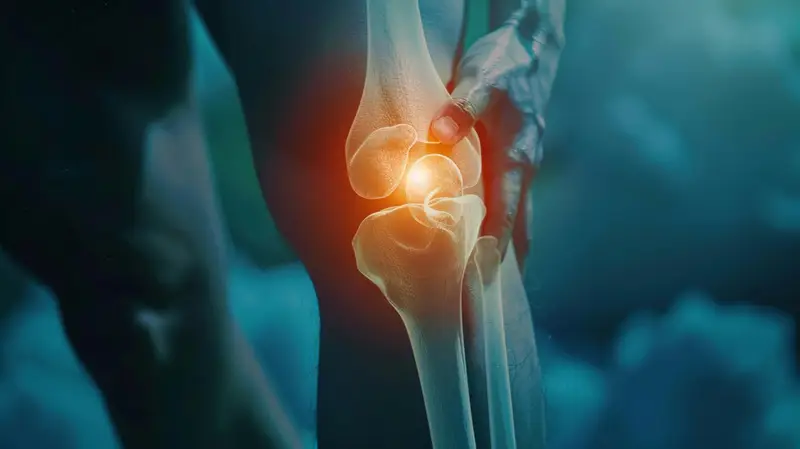- Published on: Oct 18, 2023
- 2 minute read
- By: SecondMedic Expert
Can A Knee Injury Cause Ankle Swelling?
Injuries can happen to anyone at any time, and they often come with a web of complications. If you've recently experienced a knee injury, you might be surprised to find that your foot is swelling. This can be perplexing, leaving you with questions about why your ankle seems to be involved in your knee's ordeal. In this article, we will delve into the topic of knee injuries and the unexpected consequence of ankle swelling.
Understanding the Anatomy of the Knee and Ankle
Before we explore the relationship between knee and ankle injuries, it's essential to understand the basic anatomy of these joints. The knee is a complex joint consisting of bones, ligaments, tendons, and cartilage, while the ankle is a joint connecting the foot to the leg. Both joints are crucial for mobility and stability.
Common Injuries to the Knee
Ankle swelling after knee injury can occur due to various reasons, and they often result in pain and discomfort. Some of the common knee injuries include ligament tears and meniscus tears. These injuries can significantly impact the functioning of the knee joint and may even lead to ankle swelling.
Ankle Swelling After a Knee Injury
The phenomenon of ankle swelling after knee injury is not uncommon. Many individuals who have experienced knee injuries report this side effect. But why does this happen?
The Connection Between Knee and Ankle Swelling
The connection between knee and ankle swelling is often rooted in the interdependence of joints and the body's circulatory system. When a knee injury occurs, inflammation and fluids can accumulate not only in the knee but also in the adjacent areas, including the ankle. This fluid buildup is responsible for ankle swelling.
Symptoms of Knee Injury Causing Ankle Swelling
To better understand whether your knee injury is causing ankle swelling, it's essential to recognize the associated symptoms. These may include:
-
Swelling in the knee joint
-
Pain and tenderness in the knee
-
Limited range of motion
-
Ankle swelling
-
Discomfort while walking
Diagnosing Knee and Ankle Swelling
If you suspect that your knee injury is leading to ankle swelling, it's crucial to seek a proper diagnosis. Your healthcare provider will conduct a physical examination, and in some cases, imaging tests such as X-rays or MRI scans may be required.
Immediate Care and First Aid
Providing immediate care for both your knee and ankle is vital. Rest, ice, compression, and elevation (RICE) can help reduce swelling and alleviate pain. Wrapping the knee and ankle with elastic bandages may provide added support.
Medical Treatment for Knee and Ankle Swelling
In some cases, knee and ankle swelling may require medical intervention. Your healthcare provider may prescribe anti-inflammatory medication or recommend aspiration to remove excess fluid. Severe cases may necessitate surgery.
Rehabilitation and Physical Therapy
After the initial treatment, rehabilitation and physical therapy are essential for a complete recovery. These programs can help restore the strength and flexibility of the knee and ankle, reducing the chances of future injuries.
Preventing Knee and Ankle Injuries
Prevention is always better than cure. To reduce the risk of knee and ankle injuries, it's essential to maintain a healthy lifestyle, including regular exercise, proper footwear, and the use of protective gear during sports or physical activities.
When to Seek Professional Help
If your knee and ankle swelling persist or worsen, it's crucial to seek professional medical advice. Only a healthcare provider can determine the underlying cause and provide the appropriate treatment.
Can a Torn Ligament in the Knee Cause Ankle Swelling?
Yes, a torn ligament in the knee can cause ankle swelling. When a ligament is injured, it can lead to significant inflammation and fluid buildup, which often extends to the ankle. If you suspect a ligament tear, consult a healthcare provider immediately.
Knee Injury Swollen Ankle - Real-life Experiences
To provide a personal touch to this article, we've gathered experiences from individuals who have faced knee injuries and subsequent ankle swelling. Their stories shed light on the challenges and successes they encountered during their recovery.
Conclusion
In conclusion, if you've injured your knee and now your foot is swelling, there is a definite connection between the two. Knee injuries can lead to ankle swelling due to inflammation and fluid accumulation. It's essential to seek proper medical care and follow rehabilitation recommendations for a full recovery.
Read FAQs
A. The duration can vary, but with proper care and treatment, ankle swelling usually subsides within a few weeks.
A. It's advisable to refrain from strenuous activities until the swelling has subsided and you've received medical clearance.
A. Your physical therapist will provide specific exercises tailored to your condition. These may include strengthening and flexibility exercises.
A. Ankle swelling can be a common side effect of knee injuries. However, it's essential to consult a healthcare provider for a proper evaluation.
A. Maintaining a healthy lifestyle, wearing proper footwear, and using protective gear during physical activities are effective preventive measures.










